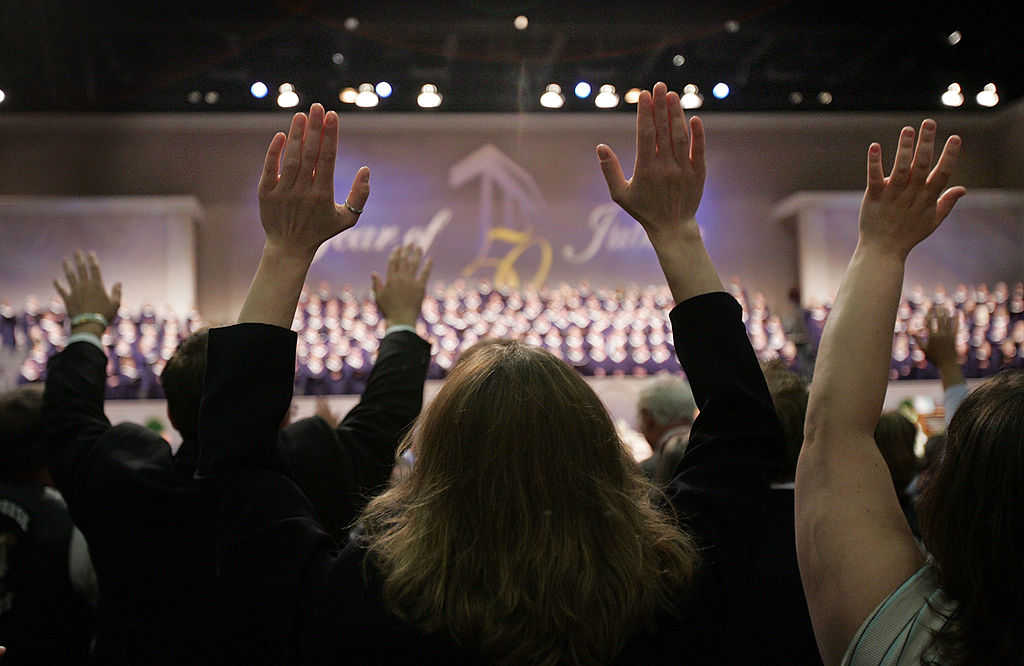Some scholars are disputing a much-publicized report that found that white evangelicals are experiencing a massive decline when it comes to their share of the U.S. population.
READ: The Shocking Difference Between Those Who Read the Bible Regularly — and Everyone Else
Select academics are speaking out after a PRRI report that released last week proclaimed that “aging white Christian groups now accounting for fewer than half of the public.” The research found that just 17 percent of Americans are now white evangelical Protestants, down from 23 percent in 2006.
“Today, only 43 percent of Americans identify as white Christian, and only 30 percent as white Protestant,” a PRRI press release proclaimed. “In 1976, roughly eight in ten (81% percent) Americans identified as white and identified with a Christian denomination, and a majority (55 percent) were white Protestants.”
But not everyone is buying that the decline is as stark as PRRI’s findings — which relied on 101,000 interviews conducted between 2016 and 2017.
“The decline that they show in their survey doesn’t match what we see in other surveys that are of higher quality and are seen as more accurate,” Tobin Grant, a political science professor at Southern Illinois University, told The Christian Post.”
He cited the respected General Social Survey, which found that, for “white, not latino, self identified born-again (or born again experience)” Christians, there hasn’t been much of a decrease.
“No decline. Period,” he recently tweeted, along with a graph.
https://twitter.com/TobinGrant/status/905804011026210816
Others shared in Grant’s skepticism, alleging that the PRRI results are potentially being oversold.
Among those critics are Andrew R. Lewis, assistant professor at the University of Cincinnati, and Ryan P. Burge, who teaches political science courses at Eastern Illinois University. Lewis and Burge published a response this week in a blog post titled, “No, Evangelicals Are Not on Their Deathbed.”
The academics alleged that there’s “one big problem” with some of the narratives coming out of the PRRI survey, specifically the claim that white evangelicals experienced a massive, six-point decline between 2006 and 2016: “Other prominent, longitudinal surveys do not corroborate the decline among evangelicals.”
Lewis and Burge relied on the GSS and the Cooperative Congressional Election Study (CCES) to see whether it’s true that white evangelicals have truly experienced a steep decline over the past decade. Those studies looked at evangelicals in different ways — by affiliation and then by self-idenficication (PRRI used the latter as well).
In the end, the professors concluded that the GSS and CCES data show “no evidence of a 6 percentage point drop.” Here’s more from Lewis and Barge:
Bringing data from the GSS and CCES together with the PRRI data should provide a strong dose of caution to stories about evangelical decline over the past decade, and especially evangelicals being on their deathbed. Now white evangelicals do appear to have declined about 10 percentage points since their peak in the 1980s, as the figure below from the GSS shows (using the affiliation classification scheme). The decline, however, seems to have been realized between the mid-1990s and mid-2000s, largely leveling out in the present era. Thus, while there are some signs that white evangelicalism has continued to be in a slight decline over the past decade, it does not appear to be in a freefall.
You can read the complete analysis here.
PRRI CEO Robert Jones responded by doubling down and telling The Christian Post that his firm’s findings line up with the Pew Research Center.
“According to Pew, the percentage of white, non-Hispanic Protestants has dropped from 23 percent in 2006 to 17 percent in Pew’s latest publicly available survey (October 2016),” he said. “The 2006 number is the exact number PRRI used in our report, and the most recent Pew number is identical to PRRI’s finding that the percentage of white evangelical Protestants has fallen to 16.8 percent.”
It’s no secret that faith is experiencing some changes here in the U.S. The Pew Research Center found that the proportion of described Christians in America decreased from 78.4 percent in 2007 to 70.6 percent in 2014.
Additionally, those saying they are “nones” (either atheists, agnostics or people unaffiliated with a specific faith cohort) increased during the same time from 16.1 percent to 22.8 percent.
Still, Pew has also estimated that secularism worldwide will actually decline as a share of the world’s population by 2050, growing from 16.4 percent in 2010 to a projected 13.2 percent in 2050, as Deseret News recently reported.



